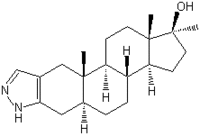When I was a kid growing up in Dallas, our summer evenings were punctuated with electronic pops and screeches from my dad's bedroom radio, as he struggled to tune in the St. Louis Cardinals baseball games from St. Louis megastation KMOX. We were serious Cardinals fans.
The whole family--Dad, Mom, brothers, uncles, aunts, and cousins--was from St. Looie. And best of all, the Cardinals' manager was one of my father's oldest friends. On trips back to St. Louis, not only would we go to games, but I'd get a chance to go into the clubhouse beforehand, get autographs if I was brave enough, or more likely just stare at Stan "The Man" Musial, the greatest Cardinal of all time. I bled red and hated that virtually every national "game of the week" was a New York Yankees game.
I couldn't have cared less that Houston had gotten one of the first expansion teams. A Dallas kid, I just thought Houston was a backwater, disgusting muck of a city with a miserable team to match. No, my playground arguments were about real teams, current and past. And I could sling stats with the best of them.
Yeah, sure, DiMaggio was a great player. But, hey, Musial had more hits, hit more home runs and doubles, drove in more runs, and had a higher lifetime batting average than Mr. Coffee. Sure, Musial played more seasons, but then again, he hadn't gone off half-cocked and married Marilyn Monroe either.
But that's always been one of the great things about baseball. More than any other major American sport, it invites friends, sons, fathers, and grandfathers to debate such lofty questions as: Who is the best clutch hitter of all time? Which pitcher has been the most dominant for a five-year period? What infield is the best ever? On and on. All made possible by the fact that, with the exception of the "dead ball era" at the turn of the 20th century when players used a softer ball, the game has hardly changed. You could argue that Lou Gehrig in the '20s and '30s and Eddie Murray in the '70s and '80s were playing essentially the same game. Until the '90s, that is, when steroid use took off and the game's most sacred statistics for offensive production took a massive beating.
[ILLUSTRATION OMITTED]
Leadoff hitters like Brady Anderson were now hitting 50 homers; little runts like Lenny Dykstra all of a sudden were powering up; and the true power hitters, like Mark McGwire, were crushing the ball in unprecedented ways. Ruth's record of 60 homers in a season was set in 1927; Roger Maris didn't break that mark until 1961. Then, in the short span from 1998 to 2001, McGwire hit 70, Sosa over 60 three times, and Barry Bonds 73 in 2001. It's clear now, from federal investigations, trials, statements, and drug test results, the ball wasn't juiced, but the players were.
The most recent revelation, that Rafael Palmeiro of the Baltimore Orioles tested positive for the use of the anabolic steroid stanozolol, only confirms what everyone in baseball has known for years: Take a good, high-average hitter like Palmeiro, add steroids or human growth hormones, and, voila, you get 500-plus career home runs and 3,000-plus hits. No wonder Ryne Sandberg, the great Cubs second baseman of the '80s and recent inductee in the baseball Hall of Fame, was so scathing in his remarks at his induction about players' cheating through the use of drugs. When he left the game, there was no question about his preeminence as one of the two or three greatest at his position. But set his numbers against the inflated figures from the '90s and they look downright paltry.
Since baseball only got around to banning steroid use in 2002, it's impossible to know who was doing what and for how long. Hence, it's impossible to restore the integrity of the game's numbers or even add asterisks to some of the records that were set.
However, there is one thing that can be done: Ban the biggest names--McGwire, Palmeiro, Sosa, and Bonds--from the Hall of Fame. As the rules of election to the Hall make clear, the sportswriters who are voting are to take into consideration a player's record and ability, but also his "integrity, sportsmanship, [and] character." Since each of them has either been caught or virtually admitted using illegal substances, there is sufficient ground for keeping them out.
No, it won't restore what's been lost. And it's too bad for someone like Bonds, who might have made it into the Hall without steroids. But, the fact is, Bonds did cheat, and the only thing baseball can and should do is deny him and the others the ultimate prize--membership in the Hall.
Besides, it might allow guys like me to get back to the vital business of lecturing our own kids on just how great the Frank Robinsons and Bob Gibsons of our day were.
COPYRIGHT 2005 News America Incorporated
COPYRIGHT 2005 Gale Group



